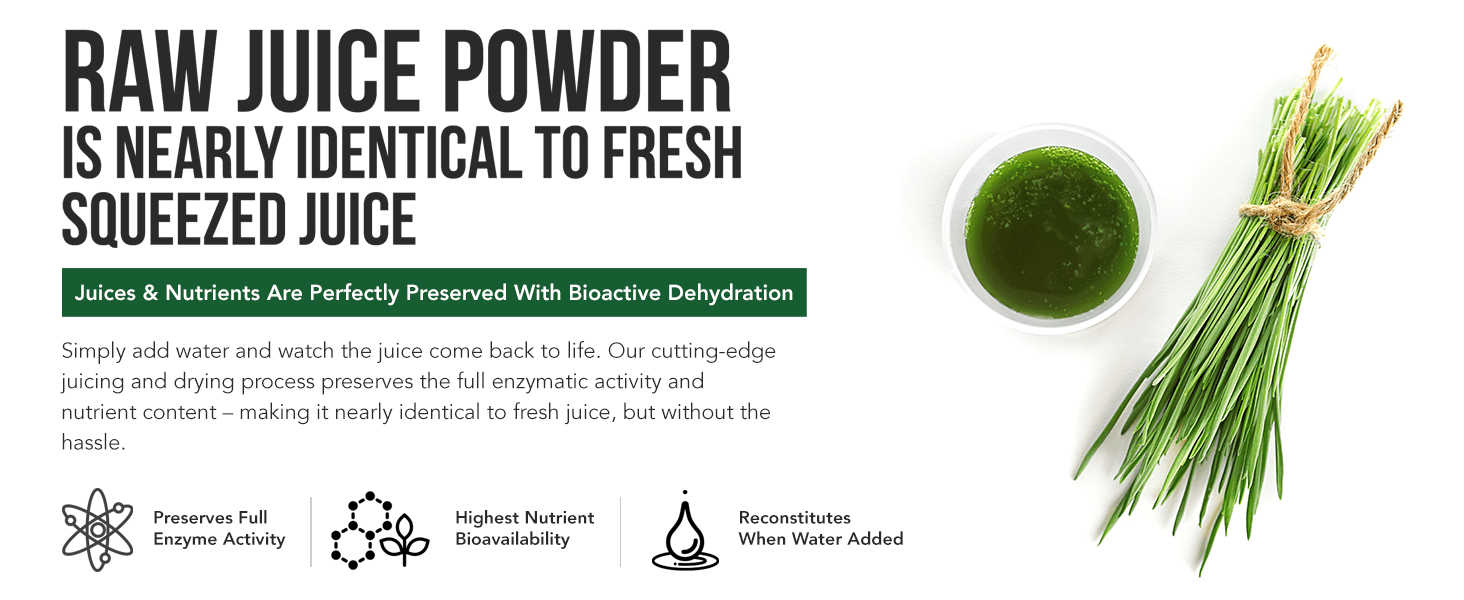Provide the answer to the question here.












Wheatgrass and barley grass are very similar nutritionally, but it is important to note that barley grass acts as a free radical scavenger, which reduces inflammation and pain. Wheatgrass contains P4D1, a glucoprotein, which acts as an antioxidant, reducing inflammation. It's also thought to be able to help the body attack cancer cells.
Many customers prefer taking both wheatgrass juice powder and barley grass juice powder together or alternating between them for the most balanced nutritional coverage. It's also beneficial to diversify your greens intake, as the body responds better to food diversity, similarly to how the body responds better to changing up exercises in your workouts. As for taste, the barley grass can be slightly sweeter than wheatgrass.
No, it does not contain Kamut® however our 5 Grass Juice Blend does contain Kamut®?
Yes, all 3 of our grass juice powders are gluten-free and non-gmo; wheatgrass, barley grass, and the 5 grass juice blend.
Vitamin K is fat-soluble, which means your body stores excess amounts in the liver and fatty tissue. Vitamin K's principal role is to support blood coagulation. Bacteria in your intestines produce a small amount of vitamin K, and you also get it from your diet. Green vegetables are the best sources rich in chlorophyll. Chlorophyll is the plant pigment that produces vitamin K in vegetables like kale, turnip greens, broccoli, spinach, asparagus, and wheatgrass, all rich in vitamin K.
Wheatgrass contains 35 mg. of vitamin K, which is 44% of the recommended daily value.
Both wheatgrass and barley grass juice powders should be stored in an airtight container in a cool, dry place. Please keep it away from sunlight as the sunlight can diminish the nutritional quality.
